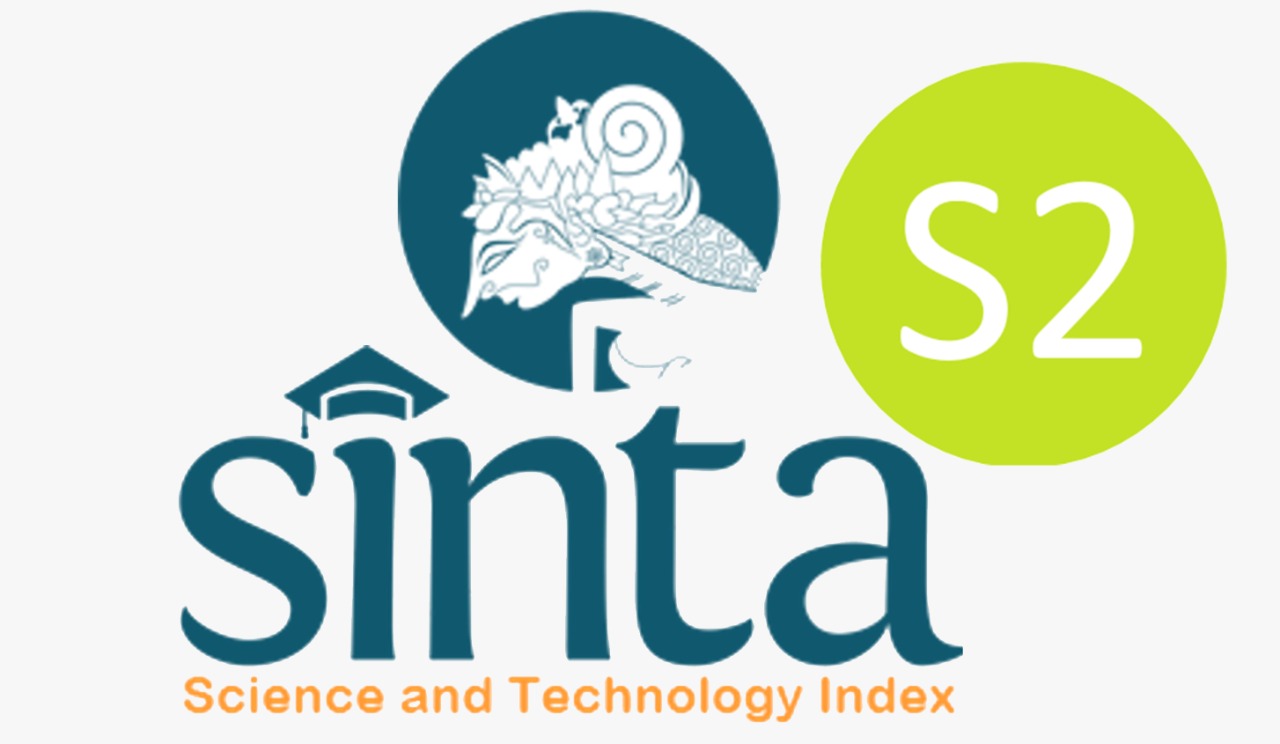INTERMEDIATING ROLES OF INSTITUTIONAL INFRASTRUCTURE IN THE TRADE OPENNESS-INCLUSIVE GROWTH NEXUS: NEW EMPIRICAL EVIDENCE FROM NIGERIA
Downloads
Introduction: Inclusive growth (IG) is a revolutionary method for generating and sustaining macroeconomic stability through economic development, social equity, and prosperity. There has been little theoretical and empirical study in Nigeria on analyzing the effects of trade openness on inclusive growth and exploring its determinants.
Methods: This study examines the intermediating roles of institutional infrastructure in the trade openness-inclusive growth nexus in Nigeria spanning from 1985 to 2021. The study employed the Johansen Cointegration methodology to confirm the existence of the long-run association while fully modified ordinary least squares (FM-OLS) and dynamic ordinary least squares (DOLS) techniques are used to elucidate the uncertainty in the trade openness-inclusive growth nexus.
Results: Consequently, the results of the Johansen Cointegration confirmed the long-run association among variables. The FM-OLS and D-OLS indicate that trade openness enhances growth in Nigeria, suggesting that greater trade openness would foster inclusive growth and remain a focal point for both direct and indirect relations with inclusive growth. The interaction effects of trade openness and institutional infrastructure on inclusive growth show negative and insignificant effects on inclusive growth, demonstrating that institutional infrastructure plays a mitigating influence in the relationship between trade openness and inclusive growth, albeit insignificant at a 5% level.
Conclusion and suggestion: The study recommends that Nigeria should pursue policies aimed at improving institutional infrastructures with a way of reducing transactional costs and risks related to trading.
Acemoglu, D. & Robinson, J. (2008). The Role of Institutions in Growth and Development. Commission on Growth and Development Working Paper No. 10
Agyei, S. K. & Idan, G. A. (2022). Trade Openness, Institutions, and Inclusive Growth in Sub-Saharan Africa. Econ, Soc, Tech, & Climate Change, 1–12
Ali, I. & Son, H. (2007). Defining and measuring inclusive growth: Application to the Philippines. ERD Working Paper Series. Economics and Research Department, Asian Development Bank, Manila. Accessed from https://www.adb.org/sites/default/files/publication/28211/wp098.pdf
Ali, I & Zhuang, J. (2007). Inclusive growth toward a prosperous Asia: Policy implications. ERD Working Paper Series (97).
Anand, R. Mishra, S. & Peiris, S. J. (2013). Inclusive growth: Measurement and determinants. IMF Working Paper No. 135.
APEC (2015). Trade, Inclusive Growth, and the Role of Policy. A publication of Asia-Pacific Economic Cooperation Policy Support Unit. Retrieved from https://www.apec.org/docs/default-source/publications/2015/11/key-trends-and-developments-relating-to-trade-and-investment-measures-and-their-impact-on-the-apec-r/key-trade-and-investment-trends_nov-2015_final13nov.pdf?sfvrsn=939fd183_1
Aslam, A. (2020). The hotly debate of human capital and economic growth: Why institutions may matter? Qual. Quant. Int. J. Meth. https://doi.org/10.1007/s11135-020-00989-5
Aslam, A., Naveed, A. & Shabbir, G. (2021). Is it an institution, digital or social inclusion that matters for inclusive growth? A panel data analysis. Qual Quant., 55, 333–355. https://doi.org/10.1007/s11135-020-01008-3
Arvin, M. B., Pradhan, R. P., & Nair, M. (2021). Uncovering interlinks among ICT connectivity and penetration, trade openness, foreign direct investment, and economic growth: The case of the G-20 countries. Telematics and Informatics, 60, 101567. https://doi.org/10.1016/j.tele.2021.101567.
Berg, A. & Ostry, J. D. (2011). Inequality and unsustainable growth: Two sides of the same coin? IMF Staff Discussion Note 11/08. Washington: International Monetary Fund.
Chhabra, Megha., Giri, Arun Kumar., and Kumar, Arya. (2022). Do technological innovations and trade openness reduce CO2 emissions? Evidence from selected middle-income countries. Environmental Science and Pollution Research Vol. 29 Issue 43. 65723-65738.
Chhabra, Megha., Giri, Arun Kumar., and Kumar, Arya. (2023). Do trade openness and institutional quality contribute to carbon emission reduction? Evidence from BRICS countries. Environmental Science and Pollution Research (2023) 30:50986–51002. https://doi.org/10.1007/s11356-023-25789-w
Chong, A & Gradstein, M. (2007). Inequality and institutions. The Review of Economics and Statistics 89(3):454–465.
Çoban, O., Onifade, S. T., Yussif, A. R. B., & Haouas, I. (2020). Reconsidering trade and investment-led growth hypothesis: New evidence from Nigerian economy. Journal of International Studies, 13(3), 98-110. https://doi:10.14254/2071-8330.2020/13-3/7.
Dollar, D., & Kraay, A. (2004). Trade. Growth and Poverty. Economic Journal, 114, 22–49.
Ehigiamusoe, K. U., Lean, H. H. & Lee C. C. (2019). Moderating effect of inflation on the finance-growth nexus: insights from West African countries. Empirical Economics, 57(2), 399-422.
Foster, N., (2008). The impact of trade liberalisation on economic growth: Evidence from a quantile regression analysis. Kyklos, 61(4), 543-567. https://doi.org/10.1111/j.1467-6435.2008.00417.x.
Glaeser, E.L., La Porta, R., Lopez-de-Silanes, F. et al. (2004). Do Institutions Cause Growth?. Journal of Economic Growth 9, 271–303. https://doi.org/10.1023/B:JOEG.0000038933.16398.ed
Grömling, M. & Klös, HP. (2019). Inclusive Growth ” Institutions Matter! Intereconomics, 54, 184–192. https://doi.org/10.1007/s10272-019-0819-y
Grossman, G. M. & Helpman, E. (1990). Comparative Advantage and Long-run Growth. American Economic Review, 80, 796-815.
Hakimi, Abdelaziz & Hamdi, Helmi. (2020). "Environmental effects of trade openness: what role do institutions have?," Journal of Environmental Economics and Policy, Taylor & Francis Journals, vol. 9(1), pages 36-56, January.
Heckscher, G., Heckscher, E.F., & Ohlin, B., (1991). Heckscher-Ohlin trade theory. Mit Press. https://mitpress.mit.edu/books/heckscher-ohlin-trade-theory.
Hong, S., Oh, S. H. & Sim, S. (2018). Imperfect labour mobility and the trickle-down effect in international trade. Journal of Korea Trade, 22(1), 68–83. https:// doi.org/10.1108/JKT-09-2017-0084
Hossain, T., & Maitra, B. (2020). Monetary policy, trade openness and economic growth in India under monetary-targeting and multiple-indicator approach regimes. Arthaniti: Journal of Economic Theory and Practice, í9(1), 108-124. https://doi.org/10.1177%2F0976747919852859.
Huchet-Bourdon, M., Le Mouíªl, C., & Vijil, M. (2018). The relationship between trade openness and economic growth: Some new insights on the openness measurement issue. The World Economy, 41 (1), 59-76. https://doi.org/10.1111/twec.12586.
Joshua, U., Adedoyin, F. F., & Sarkodie, S. A. (2020). Examining the external-factors-led growth hypothesis for the South African economy. Heliyon, 6(5), p.e04009. https://doi.org/10.1016/j.heliyon.2020.e04009.
Kakwani, N. C. (1980). Income inequality and poverty: Methods of estimation and policy applications. A World Bank Research Publication. United States: Oxford University Press.
Kao, C. & Chiang, M.-H. (2000). On the Estimation and Inference of Cointegrated Regression in Panel Data. In: Baltagi, B.H., Ed., Advanced Econometrics: Non Stationary Panels, Panel Cointegration and Dynamic Panels, Vol. 15, Emerald Group Publishing Limited, Bingley, 179-222.
Kassim, L. (2015). The impact of trade liberalization on export growth and import growth in Sub-Saharan Africa. Regional Integration and Trade in Africa (pp. 47-68). Palgrave Macmillan. https://link.springer.com/chapter/10.1057/9781137462053_4.
Kaufmann, D., Kraay, A., 2018. Worldwide Governance Indicators. World Bank. <https://info.worldbank.org/governance/wgi/#home).
Keho, Y. (2017). The impact of trade openness on economic growth: The case of Cote d'Ivoire. Cogent Economics & Finance, 5:1, DOI: 10.1080/23322039.2017.1332820
Kim, D. H., Lin, S. C., & Suen, Y. B. (2011). Nonlinearity between trade openness and economic development. Review of Development Economics, 15(2), 279-292. https://doi.org/10.1111/j.1467-9361.2011.00608.x.
Kong, Q., Peng, D., Ni, Y., Jiang, X., & Wang, Z. (2021). Trade openness and economic growth quality of China: Empirical analysis using ARDL model. Finance Research Letters, 38, 101488. https://doi.org/10.1016/jfrl.2020.101488.
Krugman, P R. (1985). Increasing returns and the theory of international trade [Working Paper 1752]. National Bureau of Economic Research. https://www.nber.org/papers/w1752.
Kuznets, S. (1955). Economic growth and income inequality. Am. Econ. Rev. 45, 1–28.
Law, S. H., Kutan, A. M. & Naseem, N. A. M. (2018). The role of institutions in finance curse: Evidence from international data. Journal of Comparative Economics, 46(1), 174-191. Doi: 10.1016/j.jce.2017.04.001
Makki, S. S., & Somwaru, A. (2004). Impact of foreign direct investment and trade on economic growth: Evidence from developing countries. American Journal of Agricultura! Economics, 86(3), 795-801. https://www.jstor.org/stable/3697825.
Martin, K. M. (1992). Openness and Economic Performance in Sub-Saharan Africa: Evidence from Time – Series and Cross Country Analysis. Policy Research Working Paper WPS 1025. Washington, DC, World Bank
Menyah, K., Nazlioglu, S., & Wolde-Rufael, Y. (2014). Financial development, trade openness and economic growth in African countries: New insights from a panel causality approach. Economic Modelling, 37, 386-394. https://doi.org/10.1016/j.econmod.2013.11.044.
Musila, J. W., & Yiheyis, Z. (2015). The impact of trade openness on growth: The case of Kenya. Journal of Policy Modeling, 37(2), 342-354. https://doi.org/10.1016/j.jpolmod.2014.12.001.
Nguyen, M.-L.T. & Bui, T. N. (2021). Trade Openness and Economic Growth: A Study on Asean-6. Economies, 9, 113. https://doi.org/10.3390/economies9030113
Ogede, J. S. (2014). Openness and the Economic Performance of Sub-Saharan Africa: Evidence from Time Series and Cross-Sectionals. Ago-Iwoye Journal of Behavioural Sciences, 3 (2),104- 124
Ogede, J. S., Oduola, M. O., Yinusa, O. G. & Raimi, L. (2023). Modelling the influence of financial inclusion on the remittance-growth nexus in Nigeria. Economic Annals, LXVIII.
Ozturk, I., & Acaravci, A., (2010). Testing the export-led growth hypothesis: empirical evidence from Turkey. The Journal of Developing Areas, 44(1), 245-254. https://www. jstor.org/stable/41428203.
Phillips, P. C. B. & Hansen, B. E. (1990) Statistical inference in instrumental variable regression with I (1) processes. Review of Economic Studies, 57, 99–125.
Pritchett, Lant and Werker, Eric. (2012). Developing the Guts of a GUT (Grand Unified Theory): Elite Commitment and Inclusive Growth. Effective States and Inclusive Development Research Centre (ESID) Working Paper No. 16/12, Available at SSRN: https://ssrn.com/abstract=2386617 or http://dx.doi.org/10.2139/ssrn.2386617
Rani, R., & Kumar, N. (2019). On the causal dynamics between economic growth, trade openness and gross capital formation: evidence from BRICS countries. Global Business Review, 20(3), 795-812. https://doi.org/10.1177%2F0972150919837079.
Rauniyar, G. & Kanbur, R. (2010). Inclusive growth and inclusive development: a review and synthesis of Asian development bank literature. J. Asia Pacific Econ. 15(4), 455–469. https://doi.org/10.1080/13547860.2010.517680
Romer, P M. (1986). Increasing returns and long-run growth. Journal of Political Economy, 94(5), 1002-1037. https://doi.org/10.1086/261420.
Ricardo, D. (1891). Principles of political economy and taxation. G. Bell and Sons. https://books.google.com.tr/books?id=Qg-AAAAYAAJ&printsec=frontcover.
Sabir, S. & Qamar, M. (2019). Fiscal policy, institutions and inclusive growth: evidence from the developing Asian countries. International Journal of Social Economics, 46(6), 822-837. https://doi.org/10.1108/IJSE-08-2018-0419
Sarwar, S., Siddiqi, M.W. & Butt, A.R. (2013). Role of institutions and economic growth in Asian countries. Develop. Countr. Stud., 3 (2), 80-91Smith, A. (1776). An inquiry into the nature and causes of the wealth of nations (Vol. 1). W. Strahan and T. Cadell. http://hdl.handle.net/1842/1455.
Seyfullayev, I. (2022). Trade openness and economic growth: Evidence from Azerbaijan. Problems and Perspectives in Management, 20(1), 564-572. doi:10.21511/ppm.20(1).2022.45
Solow, R.M. (1956). A contribution to the theory of economic growth. Q. J. Econ. 70, 65–94
Tebaldi, Edinaldo & Elmslie, Bruce. (2008). Do Institutions Impact Innovation?. MPRA Paper 8757, University Library of Munich, Germany.
Thirlwall, A. P. (2000). Trade agreements, trade liberalization and economic growth: a selective survey. African Development Review, 12(2), 129-160. https://doi.org/10.1111/1467-8268.00020.
Ulaşan, B. (2015). Trade openness and economic growth: Panel evidence. Applied Economics Letters, 22, 163–167.10.1080/13504851.2014.931914
World Bank (2018). Reinvigorating Trade and Inclusive Growth. Washington, D.C.: World Bank Group. Retrieved from http://documents.worldbank.org/curated/en/874541538071614937/Reinvigorating-Trade-and-Inclusive-Growth
World Bank (2022). A Better Future for All Nigerians: Nigeria Poverty Assessment 2022. Washington, DC. Retrieved from http://hdl.handle.net/10986/37295
Yussif, A. R. B., Onifade, S. T, Ay, A., Canitez, M., & Bekun, F. V. (2022). Modeling the volatility of exchange rate and international trade in Ghana: empirical evidence from GARCH and EGARCH. Journal of Economic and Administrative Sciences, 5(32). https://doi.org/10.1108/JEAS -11-2020-0187
Zahonogo, P. (2016). Trade and economic growth in developing countries: Evidence from sub-Saharan Africa. Journal of African Trade, 3, 41–56.
Zergawu, Y. Z., Walle, Y. M., & Giménez-Gómez, J.-M. (2020). The joint impact of infrastructure and institutions on economic growth. Journal of Institutional Economics, 16(4), 481–502. doi:10.1017/S1744137420000016
Zhuang, J. & Ali, I. (2010). Poverty, inequality, and inclusive growth in Asia. Poverty, Inequality, and Inclusive Growth: Measurement, Policy Issues, and Country Studies.
Copyright (c) 2024 Dr, Jimoh Sina OGEDE, Dr, Ms

This work is licensed under a Creative Commons Attribution-ShareAlike 4.0 International License.
Authors who publish with Jurnal Ekonomi dan Bisnis Airlangga agree to the following terms:The journal allows the author to hold the copyright of the article without restrictions.
The journal allows the author(s) to retain publishing rights without restrictions
The legal formal aspect of journal publication accessibility refers to Creative Commons Attribution Share-Alike (CC BY-SA).
Jurnal Ekonomi dan Bisnis Airlangga (JEBA) is licensed under a Creative Commons Attribution-ShareAlike 4.0 International License

















